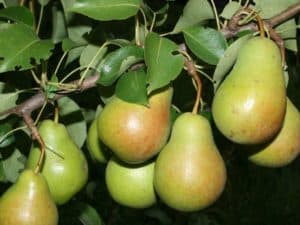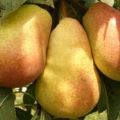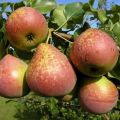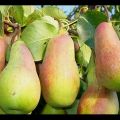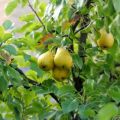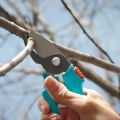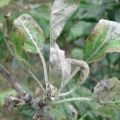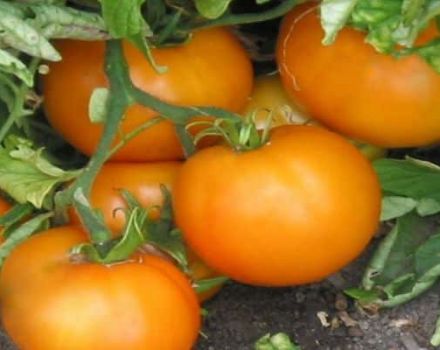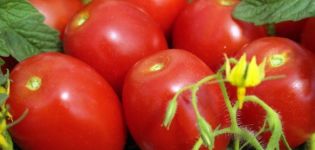Characteristics and description of the Yakovlevskaya pear variety, growing rules
Yakovlevskaya pear is a winter pear variety, bred by breeders for cultivation in areas with a short and cool summer season. This variety ripens in early autumn and can be stored until the New Year holidays. Yakovlevskaya pear is recommended to be grown in the regions of the central part of Russia. Let's take a closer look at what this variety is and what are its advantages and disadvantages.
The history of the creation of the variety
The Yakovlevskaya pear variety was bred by breeders, along with a whole line of other varieties, for winter cultivation at the end of the last century. At the beginning of the twenty-first century, the variety was introduced into the State Register.
Characteristics and descriptions of Yakovlevskaya pear
Yakovlevskaya pear is a winter variety of fruit crops. It begins to ripen in September. Best adapted for the Middle Lane, but it is possible to grow it in any region. The variety is disease resistant and tolerates drought and winter frosts well.
Disease and pest resistance
The variety has a high immunity to fungal diseases. However, it can be contaminated with rust. Well protected from harmful insects.
Description of the tree and fruit
The tree of this variety is capable of reaching a height of ten meters. The crown has the correct shape. Shoots are straight, brown. Leaves are green, ovate, elongated, with fine serration.
For better fruit set, the tree should be grown alongside other pear varieties that have similar flowering and fruiting times. The fruits have a classic elongated pear-shaped shape, characterized by the presence of a smooth, hard skin.

A ripe pear turns yellowish with a red blush. The weight of the fruit can reach two hundred grams. The stem is medium in size, curved in shape. The seeds of the fruit are of medium size, brown. The fruit pulp is tender, oily, juicy. The taste is sweet and sour.
Drought resistance and winter hardiness
Like other winter varieties, Yakovlevskaya pear has high frost resistance, it is slightly damaged from frost. Able to withstand temperatures up to minus thirty-eight degrees Celsius. In addition, the crop has a relatively high drought tolerance.
Pollination
The pear is partially self-pollinated, so other pollinating varieties must be present on the site when grown. They should have a similar flowering and ripening period as Yakovlevskaya.
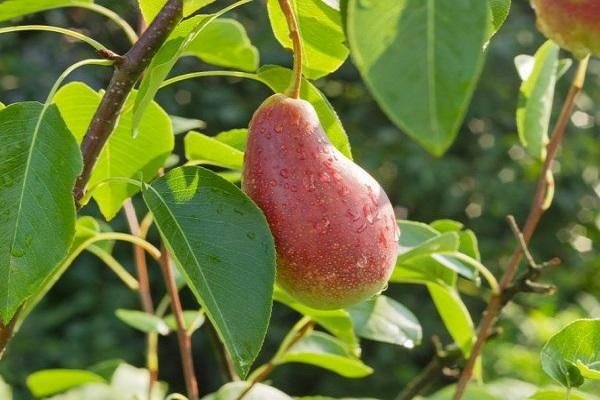
Flowering and ripening terms
The culture begins to bloom in May. The flowers are large, white or pinkish. Fruits ripen in mid-late September. Ripe fruits become firm, green or yellowish in color, with a red blush.
Yield
A young tree is capable of producing from thirty kilograms of fruit per season. With increasing age, the amount of yield increases several times, depending on the pollination of flowers.
Transportability
The variety has a high transportability due to its strong skin.
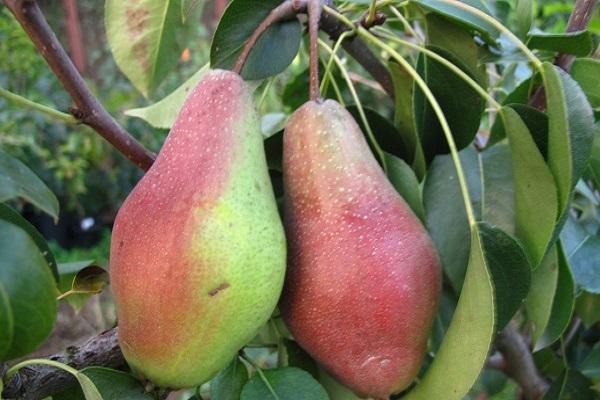
Main positive and negative aspects
Yakovlevskaya pear has its advantages and disadvantages. The main positive aspects of the crop are high yields, large tasty fruits with a high sugar content, keeping quality and ability to transport. In addition, the pear is undemanding to care, it tolerates frost and drought perfectly, and is immune to most diseases and pests.
The negative side of the variety is its low early maturity. Also, if the tree is not pruned regularly, it will produce small fruits.
Landing nuances
Yakovlevskaya pear can be planted both in spring and autumn. In the spring, the seedlings are planted after the air temperature is above zero. The pear can be planted on any soil, but if the soil is poor, it should be fertilized with manure.
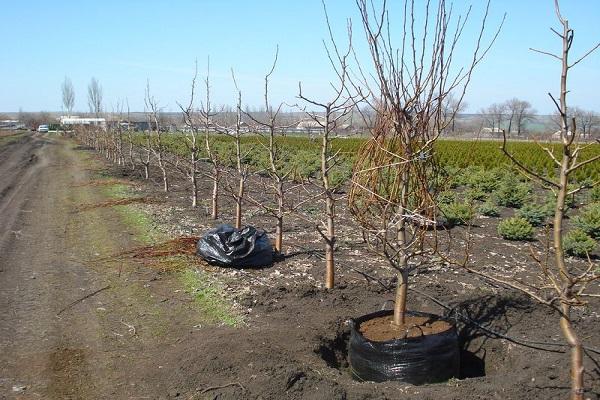
Seat selection
A pear does not tolerate a transplant, so the choice of a place must be approached responsibly. The site should be flat, dry, with fertile soil, sunlight should be unhindered on it. It is necessary to maintain a distance in relation to residential buildings and buildings. The distance should be at least three meters. The pear does not like darkening, so trees should be planted at a distance from each other. The place should be free of drafts.
Preparation of planting material
It is better to buy seedlings not in the market, but in the nursery. The seedlings must have a sticker with the name of the variety, brief information, as well as information about the breeder and recommendations for planting.
Landing
When planting a tree in the spring, a pit one meter deep is dug in the ground, and humus is added to it. Make the distance between the pits from three to six meters. The soil in the hole should settle evenly, do not leave the walls smooth. The seedling is immersed in the ground after two to three weeks. Water in the first week daily, then watering is reduced to once a month. When planting in the fall, the tree must be provided with shelter for wintering.

Plant care
Yakovlevskaya pear does not require special care. It is enough to water the tree regularly, in the required quantities, apply fertilizers on time and cover the plant for the winter.
Watering frequency
After planting a seedling, it should be watered daily for the first week. Further watering is reduced to once a month. If there is stagnation of liquid in the soil, it is necessary to build drainage, since the pear does not withstand excess moisture.
Fertilization
Until mid-July, nitrogen and organic fertilizers are applied to the soil for young seedlings. Mature trees are fed with nitrogen fertilizers in the spring, and phosphorus or potash fertilizers in the fall.
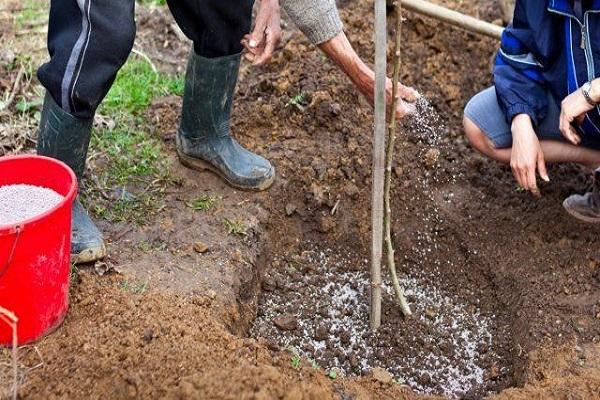
Preparing plantings for winter
Before the first winter frosts, the soil should be mulched with sawdust, grass or straw. A young seedling needs shelter for the winter season. Roofing material or similar materials are suitable as a shelter. Young trees and seedlings should be covered with spruce branches or spruce branches.
Pests and diseases
The variety is immune to fungal diseases. The only disease that affects trees is rust. Yellow spots appear on the leaves, which become brown over time. If rust appears, the affected fruits must be removed, and the tree must be treated with Bordeaux mixture.
Among insect pests, aphids and gall mites are dangerous to the variety.
Gall mite infects fruits and buds and prevents them from developing. Trees stop bearing fruit, buds and shoots rarely appear. Leaves damaged by a tick must be destroyed. The plant must be treated with acaricides.

Aphids feed on leaf sap, which causes them to wither. From aphids, the leaves are treated with a soap solution, in the proportion of one hundred milliliters of soap per one liter of clean water. Also, use a dandelion solution to fight.
For the prevention of diseases, trees need to be treated in the spring with whitewashing and do not forget to apply fertilizers to the soil in time.
Harvesting and storage of crops
Harvest the pear two to three times in one season. The ripeness of the fruit is indicated by a yellowish-green color with a red blush. The fruit should be firm to the touch. They can be stored in the refrigerator for up to three months after collection.

